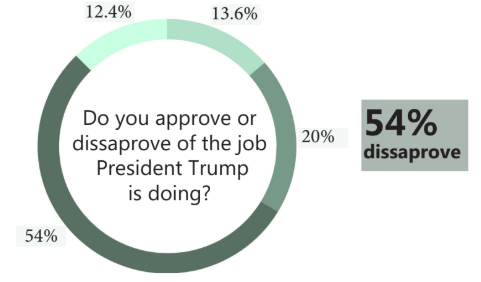National Diabetes Month: Type 1 diabetes is rising among young adults and children
Many children and younger adults have been diagnosed with diabetes. But recently, the number of diagnosis has spiked.
Granite Bay Today Illustration/Jashan Singh
As November in 2021 begins, so does National Diabetes Awareness Month.
Type 1 diabetes has grown to be more common in young adults, with a 30% increase in the diagnosis in the United States since 2020. As of today’s date, there are nearly 1.6 million Americans with Type 1 diabetes.
“I’d say in the beginning your world is upside down, and then it just becomes your new normal and … you’ll always have extra work and you always have to be prepared,” said Brandi Goshey.
Her son, Granite Bay High School freshman Jake Goshey has had Type 1 diabetes for about 3 years.
Type 1 diabetes is a chronic condition in which the pancreas produces little or no insulin. Insulin is a hormone that is necessary to allow glucose to enter cells to produce energy within the body.
Jake Goshey and his family worry about his blood glucose numbers on the football field. He is afraid that people won’t know what to do if his blood glucose levels drop, or if he is unable to bring them up in time.
“My family, my parents, they’re always worried about me and watch my numbers… even on the field. I didn’t think it was gonna be that big of a deal but it’s affected me a lot over time.” Jake Goshey said.
For not only Jake Goshey, but others with diabetes, the misunderstanding of devices dedicated to diabetics has also affected them as well.
“I mean, the fact that a lot of teachers think it’s a phone, kind of proves that they don’t really understand the point of an insulin pump,” sophomore Ryan Kim, a non diabetic said.
Even those with diabetes at GBHS agree that most people don’t know what an insulin pump is, or why diabetics rely on their phone to tell them their blood glucose numbers. For those that use a Dexcom device, they can connect their phone with their monitor and access their blood sugar reading on their phone.
An insulin pump serves as a pancreas on the outside and provides insulin to the body daily. Finger pokes and Dexcom’s help diabetics keep track of their blood glucose numbers to make sure that they are within the range, the range varies with age.
Being too high or too low can be life threatening.
If there is ever a circumstance where someone with diabetes requires help, being familiar with the devices that one with Type 1 diabetes uses can be incredibly beneficial.
If one is too high above their range, they need more insulin and if one is too low below range, they need carbs or a glucose tablet to help maintain and raise their glucose levels.
Along with the devices a Type 1 diabetic uses, there is a bigger expense, the hormone insulin.
Insulin prices have skyrocketed over the years, costing between $25-$100 per vial.
“It breaks my heart for those that are no longer on their parent’s insurance, the 20 and 30 year olds who don’t have good insurance and they can’t afford the insulin so they ration, and it’s not healthy” Brandi Goshey said.
Along with the expense of insulin, a Type 1 diabetic may also face harmful stereotypes formed by one’s little to no knowledge about T1D.
Kim states how some of the stereotypes he has heard are that, “people with type one diabetes just eat a lot of sugar… or are overweight.”
Another misconception is that Type 1 diabetics can’t have sugar, or cause their own diabetes since they ate too much sugar.
In reality, Type 1 is a genetic, chronic condition that isn’t caused by oneself. It varies from Type 2 Diabetes which is usually found in adults. Type 2 diabetes is an impairment in how the body uses and regulates sugar.
“When type one diabetics have their blood sugar go low…they need carbs to get it higher, but a lot of people [think] … you need sugar, but you can’t eat sugar,” senior Brady Nickle, a Type 1 diabetic said.
When it comes to awareness about diabetes, diabetics have different perspectives. It depends on how long they have been managing diabetes for themselves or how confident they are about how they can handle it.
“I can take care of myself, and if there’s other kids that have it that aren’t as vocal, then I feel like it would be beneficial to them” Nickel said.
If a diabetic is experienced and can easily know how to treat themselves, they may not need assistance at all.
Even so, the newly diagnosed patients and those that are still worried will need help sometimes if they are unable to catch a low at the right time.
About 1.6 million Americans are living with Type 1 diabetes and about 64,000 people are diagnosed each year in the U.S. The numbers increase yearly and it has been becoming more common than before. Researchers believe that this increase may be due to a spike in protein, which has been seen in an experiment study conducted that saw that Type 1 Diabetes has almost doubled in children during the peak of the pandemic.
As more and more people are getting diagnosed, 11 year old diabetic Manat Singh ponders.
“I used to always question why it had to be me. My friend’s usually question my Dexcom, but I try to tell them what it is. I just have to do my pancreas’ work myself.”











Ethan Shohet • Nov 1, 2021 at 11:21 pm
Very cool article! I thought I knew a lot about T1D, but this opened my eyes a lot more. That Manat kid sounds super cool too, good for him for sticking it through.